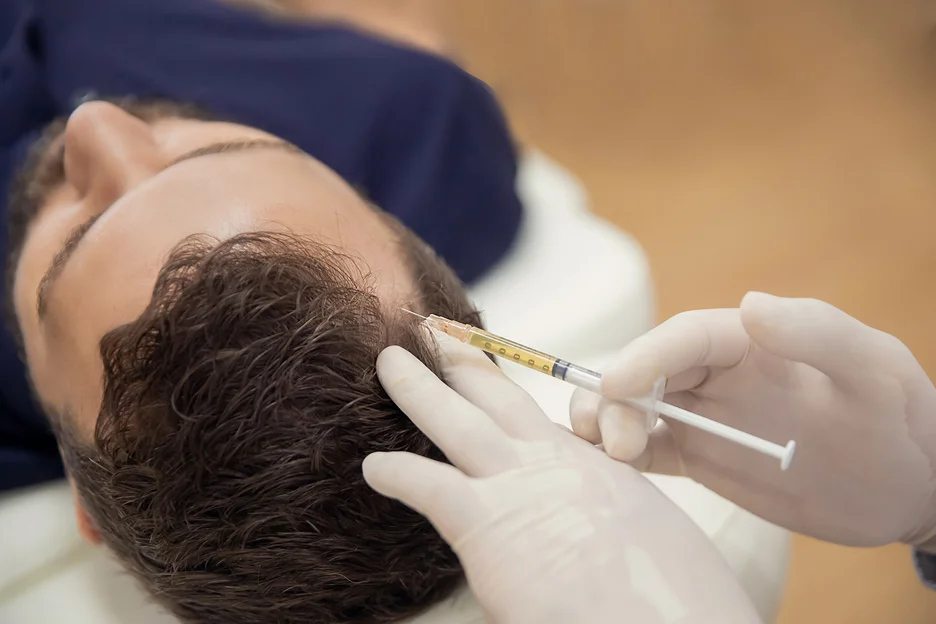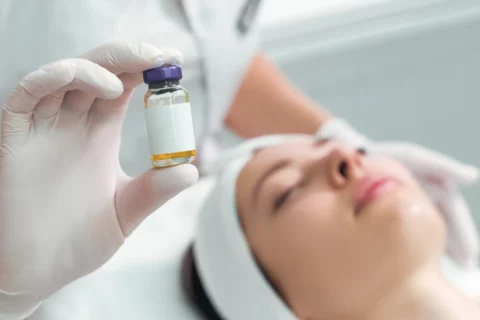Exosomes are tiny membrane-bound vesicles secreted by cells that play important roles in intercellular communication. They have the natural ability to transport growth factors and signaling molecules to modulate skin cell behavior and promote healing processes.
As part of its dedication to provide educational material about potential new aesthetic treatments, FACE Med Store is covering the emerging topic of exosomes, especially derived from stem cells, for skin rejuvenation and tissue regeneration applications.
This article will provide an overview of exosome markers relevant to aestheticians using them for skin rejuvenation therapies.
What are Exosome Marker Proteins?

Exosome markers, also called exosome surface markers, are proteins found abundantly on the membrane surface or inside exosomes that can be used to identify them. These markers are important for detecting, quantifying, and characterizing exosomes derived from specific cell types in biofluids or isolation preparations.
Some commonly evaluated exosome protein markers include tetraspanins like CD63, CD9, and CD81, ESCRT components like ALIX and TSG101, and heat shock proteins like Hsp70.
However, the expression patterns of these “standard” markers on exosomes can vary substantially depending on factors like cell source, isolation method, disease state, etc. There isn’t a single universal exosome marker that is exclusively or definitively associated with all exosomes.
So for aesthetic medicine applications, having a quality control panel with multiple well-characterized exosome markers is essential for verifying exosome integrity and consistency between preparations.
Emerging Exosome Markers for the Skin
Most exosome biomarkers studies have focused on profiling common markers like tetraspanins and ESCRT proteins. However, next-generation sequencing and proteomics technologies have enabled identifying new exosome proteins that could serve as markers with relevance to skin biology.
Some emerging skin-related exosome markers that show therapeutic promise include:
- Collagen – Types I and VI collagen are structural proteins in connective tissue. Exosomes from stem cells and dermal fibroblasts have been found to contain collagen, which can help stimulate new collagen production for skin rejuvenation.
- Elastin – Elastin protein imparts stretch and elasticity properties to tissues. Recent research found elastin shuttled by hADSC exosomes, which could help restore skin elasticity.
- Proteoglycans – Proteoglycans (PGs) are proteins with glycosaminoglycan chains that maintain extracellular matrix hydration and skin integrity. Exosomal PGs like lumican, decorin, and perlecan contribute to skin repair processes.
- Integrins – Cell surface receptors like integrins facilitate cell-matrix interactions mediating cell growth and differentiation. Specific integrins on hADSC-derived exosomes induced collagen synthesis in aged fibroblasts.
- MMP Inhibitors – MMPs or matrix metalloproteinases promote skin aging by degrading extracellular matrix. Exosomes with enriched MMP inhibitors help counteract this process.
In conclusion, deeper investigation of known and newly discovered exosome protein markers will provide insights around vesicle cargos and functions, enabling better standardization of exosome-based skin therapeutics.
Importance of Exosome Characterization for Aesthetic Medicine Applications

For clinical use of exosomes in aesthetic medicine, having well-defined vesicle characterization criteria is critical for:
Verifying Origin Cell Health:
Analyzing exosome molecular contents can provide insights around the originating cell’s growth state and potency for secretion. Comparing marker profiles at the protein or RNA level serves as a readout for source cell viability.
Monitoring Product Consistency:
Exosomes must meet rigorous release criteria testing for each production batch to confirm uniformity and stability of the therapeutic product over time. Evaluating batch variability in exosome markers, morphology, and bioactivity ensures consistent clinical outcomes.
Understanding Mode-of-Action:
In-depth profiling of exosome surface markers, internal cargo contents like cytokines and growth factors, and functional effects on target skin cells are key to elucidating mechanisms of tissue regeneration for intended aesthetics outcomes.
Enabling Standardization:
A major limitation around exosome use in medical therapies is lack of definitive biomarkers and manufacturing standards between preparations. Exosome marker profiling and biophysical characterization allow developing specifications around stability, purity, identity, and strength to guide industry regulation.
The Takeaway
To conclude, exosome research remains an emerging field with much promise for skin regeneration therapies in aesthetic medicine.
As FACE Med Store is committed to keeping clinicians informed on cutting edge aesthetic techniques and modalities, advancing knowledge around exosome markers may soon enable improved standardization of therapeutically efficacious exosome preparations produced under stringent quality control for clinical use.






